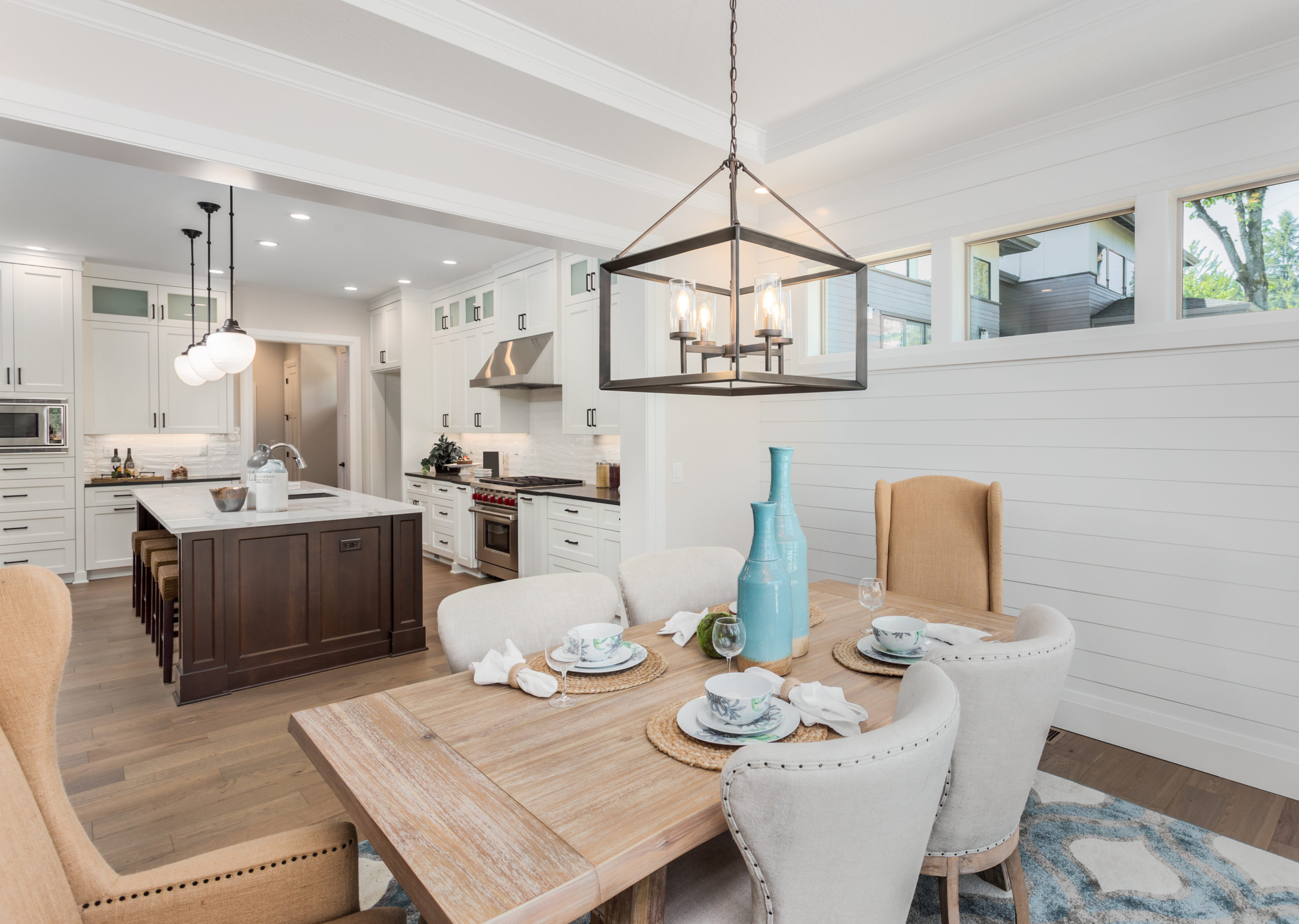There are lots of views on what the best strategies for staging a house are, but basically they can be grouped into one of three categories: declutter, depersonalize, demystify. If that seems a little abstract, read on for an explanation that could mean not only a faster sale but a better selling price.
Declutter
The deepest of deep cleans should accompany or follow the decluttering process. Tackle every possible surface in your house: walls, windows, carpets, light fixtures, window dressings, ceilings, air vents, registers, and lampshades. Consider hiring a small team of professionals to help out, because you’ll need to repeat this process on the outside.
Staging professionals recommend removing half the furniture from most rooms. This doesn’t just improve traffic flow during showings, it allows space for customization in the potential buyer’s mind. Think less is more. If the couch looks like there isn’t room for one more pillow, it doesn’t invite someone else to nest. Now that you’ve got more room, pull the furniture away from the walls and invest in an area rug for your living, even if it’s already carpeted. Use the new rug’s dimensions as your guide for creating a cozy conversational grouping in living and family rooms, so people can imagine what it will be like when they have guests over.
If you have well-organized storage in your garage or a storage locker, now’s the time to start packing things away. Renting a storage locker is an additional expense, but if you’ve truly outgrown the home you’re selling, you may have to make the investment.
Depersonalize
When buying a home, the potential buyer has to be able to not just imagine but also visualize themselves in space someone else has occupied. But they won’t be living with your family photos or your athletic trophies, their children won’t be the same height or the same names as yours, so the growth marks on the door frame just have to go. If you can’t bear to part with this piece of your family history, replace that part of the door frame.
If you have quirky, unique, or dated furniture, now’s a great time to send it out for cleaning or reupholstering. That’s if you aren’t going to replace it anyway. If you are, consider donating or selling it at the beginning of the staging process, and renting furniture while the house is on the market. You won’t need much — probably only half as much as you already have.
Pets are the bane of all real estate agents’ existence. It’s hard to accept that not everyone loves our pets the way we do. If you can get the animals out of the house before a showing, do so. If not, make sure that the fishtank is scrubbed clean, invest in a covered litter box and prepare to tend it daily, and find an attractive storage ottoman or box that will hold all the dog toys.
Demystify
Let the light in every way you can, even if it means investing in new sheers, different blinds, or a houseful of new light bulbs. Up the wattage and invest in whiter light bulbs, which more closely resemble daylight, which is 5000 to 6500 Kelvins. Plan to spend more time than you ever thought imaginable keeping your windows and windowsills clean and uncluttered.
Part of the process of helping a buyer imagine your home as their own includes creating a purpose for every room. If you’ve got a multi-purpose room that serves as a home office, guest bedroom, and craft room, chances are good you’ll not only confuse a potential buyer, you’ll overwhelm them. Take everything out of this multipurpose room, choose a single purpose for it, and put back only the items that fit that purpose. The rest will have to go into storage or find a new home.
Consider repainting your home’s interior before putting it on the market as part of the staging process. Light neutral colors still work best. Repainting will also give you a chance to repair all the picture holes and give you a fresh palette to work with when selecting artwork to display. Some real estate agents have invested in artwork that you can borrow.
Keep it simple and remember the room’s purpose when you’re hanging new pictures. Most are hung too high, at standing eye level in rooms where people tend to be seated. Think about your audience when choosing borrowed, rented, or newly purchased wall art. Photography and abstract or pop art may work better for a set of young, first-time buyers. Framed classic movie posters could add a touch of glamour if recent sales in your neighborhood have been to folks who are downsizing. But remember, by classic we mean Casablanca or Breakfast at Tiffany’s, not Rocky or Psycho.


